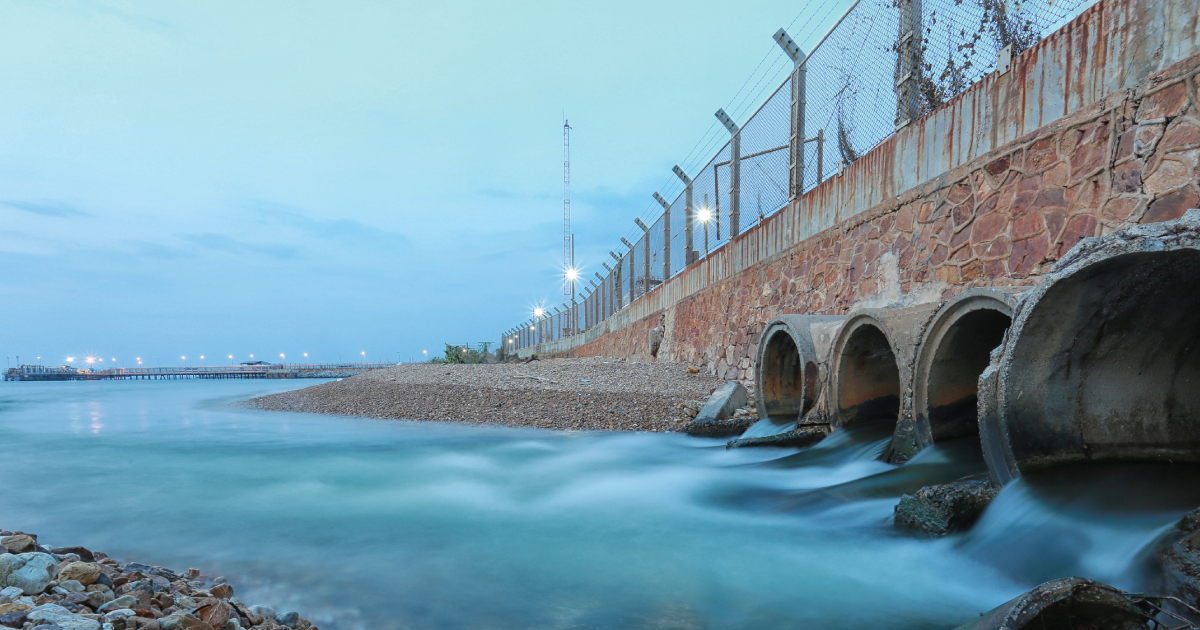
Animal Waste From Factory Farms Poses Risk to Public Health and Destroys Waterways
Concentrated animal feeding operations (CAFOs) — gigantic factory farms that hold many thousands of animals in a warehouse-style setting — are an environmental disaster in more ways than one, and when hurricanes hit, this fact becomes acutely obvious when animal waste, collected in massive “lagoons,” overflow, contaminating both land, water and residential homes.
October 30, 2018 | Source: Mercola.com | by Dr. Joseph Mercola
Concentrated animal feeding operations (CAFOs) — gigantic factory farms that hold many thousands of animals in a warehouse-style setting — are an environmental disaster in more ways than one, and when hurricanes hit, this fact becomes acutely obvious when animal waste, collected in massive “lagoons,” overflow, contaminating both land, water and residential homes.
Even under the best circumstances, the lagoons may leak, seeping millions of gallons of waste a year into neighboring soil and groundwater.1 Add in a formidable force like a hurricane and the potential for leakage, overflow and runoff is virtually guaranteed. I recently discussed this at length in “After the Hurricane: Swine Waste Swirls in North Carolina.”
Environmental contamination from overflowing animal waste is bad enough in and of itself, but CAFO waste is made all the worse by the fact that these animals are routinely fed antibiotics, which promotes antibiotic-resistant bacteria.
These drug-resistant pathogens are then spread through the environment in a variety of ways. Storms drive contaminated water across large areas, wind spread airborne pathogens, and other foods are contaminated by using the waste as fertilizer, as discussed in “Factory Farm Responsible for Lettuce Contamination.”
Hog Waste Poses Risks to Public Health
Vice News highlighted some of the problems associated with North Carolina’s CAFO hog waste in a recent article, noting:2
“The waste-filled lagoons have created a constant source of environmental pollution during hurricanes, which frequent North Carolina’s coast. Lagoons overflowed or breached in 1996 during Hurricane Fran, in 1998 during Hurricane Bonnie, in 1999 during Hurricane Floyd, in 2016 during Hurricane Matthew, and just last month during Hurricane Florence — 33 overflowed.”
Hurricanes, which hit North Carolina with regularity, clearly compound the environmental problems associated with hog CAFOs, but it’s an inescapable issue for residents year-round.
When the lagoons are emptied by spraying the liquid waste onto fields, nearby residents are quite literally showered with liquefied feces, and several studies3,4,5 have noted the health dangers of living near these CAFOs. A North Carolina swine farm nuisance lawsuit6 even presents evidence of hog DNA collected from the walls in residential homes.
Many find the stench unbearable and the air hard to breathe. Most recently, a study7 published in the North Carolina Medical Journal found communities near hog CAFOs have higher mortality rates from anemia, kidney disease, tuberculosis and septicemia, as well as higher infant mortality. According to the authors:
“Although not establishing causality with exposures from hog CAFOs, our findings support the need for future studies to determine factors that influence these outcomes, as well as the need to improve screening and diagnostic strategies for these diseases in North Carolina communities adjacent to hog CAFOs.”
As noted in the featured article,8 more than 20 nuisance lawsuits have been filed against the industry, arguing the stench and contamination from hog waste is reducing residents’ quality of life. So far, the first three cases were won by the plaintiffs, who were awarded $2.5 million,9 $25 million10 and $473 million11 in punitive damages respectively.
Antibiotic-Resistant Pathogens Are a CAFO Scourge
American livestock farmers use nearly 30 million pounds of antibiotics each year in the raising of their animals.12,13 Most of these are raised in CAFOs, where overcrowding, lack of sanitation, stress and an unnatural diet make the animals prone to illness. Antibiotics are routinely added to their feed to combat disease.
Antibiotics also have the side effect of promoting growth, making the animals grow fatter faster, which is another reason for the drugs’ use. This agricultural use accounts for about 80 percent of all antibiotics used in the U.S.,14 making it a significant source of continuous low-dose exposure via your diet.
However, while low-dose antibiotic exposure is a health risk, a far more significant concern is the antibiotic-resistant bacteria CAFO meats may harbor. As revealed by a recent analysis of food testing done by the Food and Drug Administration (FDA) in 2015, 83 percent of meats sold in U.S. supermarkets are contaminated with enterococcus faecalis, i.e., fecal bacteria. A high percentage are also contaminated with antibiotic-resistant bacteria:15,16
- 79 percent of ground turkey samples were contaminated with drug-resistant enterococcus faecalis; 73 percent of the salmonella found on ground turkey was antibiotic-resistant salmonella
- 71 percent of pork chops were contaminated with drug-resistant enterococcus faecalis
- 62 percent of ground beef samples were contaminated with drug-resistant enterococcus faecalis
- 36 percent of chicken breasts, legs, thighs and wings were contaminated with drug-resistant enterococcus faecalis; 1 in 5 strains of salmonella was resistant to amoxicillin, a type of penicillin, which as a class is designated as “critically important” in human medicine
